Growing your own herbs is a wonderful way to add fresh, aromatic flavors to your meals and enhance your gardening skills. However, to keep your herbs happy and thriving, it’s important to understand the basics of herb garden watering and care.
Herbs are like nature’s flavor-packed gems, and they can be grown in various spaces, from outdoor gardens to indoor pots on your windowsill. Regardless of where you plant them, understanding how to water your herbs and provide them with the right care is the key to a successful herb garden.
In this guide, we’ll explore the importance of proper watering, recognizing signs of overwatering or underwatering, and other essential care practices to keep your herbs thriving and ready to elevate your culinary creations.
The Benefits of Herb Gardening at Home
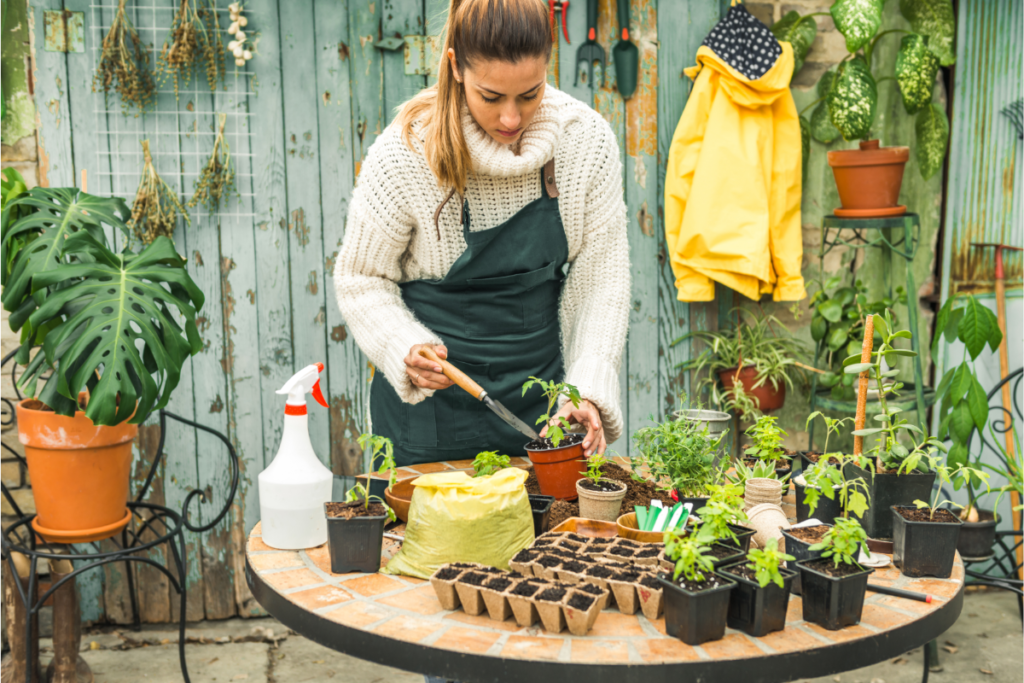
Are you considering starting an herb garden at home? It’s a fantastic idea that comes with numerous benefits. By growing your own herbs, you can enjoy a continuous supply of fresh, flavorful ingredients. Whether you have a small container garden on your balcony or a dedicated raised bed in your yard, herb gardening allows you to customize your garden to suit your space and needs. It’s a rewarding way to be more connected to nature and experience the joy of cultivating your own plants.
━Why should you start an herb garden at home?━
- Year-round availability: With an herb garden, you can grow herbs all year round. No longer will you need to rely on store-bought herbs that may have been sitting on shelves for days. Instead, you can pick fresh herbs whenever needed, ensuring maximum flavor and nutritional value for your dishes.
- Customizable space: Herb gardening allows you to tailor your garden to fit your available space. Whether you have a sunny spot in your yard or limited space on your windowsill, you can create the perfect environment for your herbs to thrive. From small pots to vertical gardens, the options are endless.
- Cost-effective: Growing your own herbs can save you money in the long run. Instead of buying expensive store-bought herbs or wasting unused portions, you can harvest what you need and reduce food waste.
- Culinary excellence: Freshly picked herbs can elevate your cooking to a new level. The intense flavors and aromas of homegrown herbs add depth and complexity to your dishes, making every meal a culinary delight.
So, whether you’re a seasoned gardener or a beginner, starting an herb garden home is rewarding and beneficial. With a little time, effort, and care, you’ll be able to enjoy the bountiful rewards of your own herb garden.
Selecting the Right Herbs for Your Garden
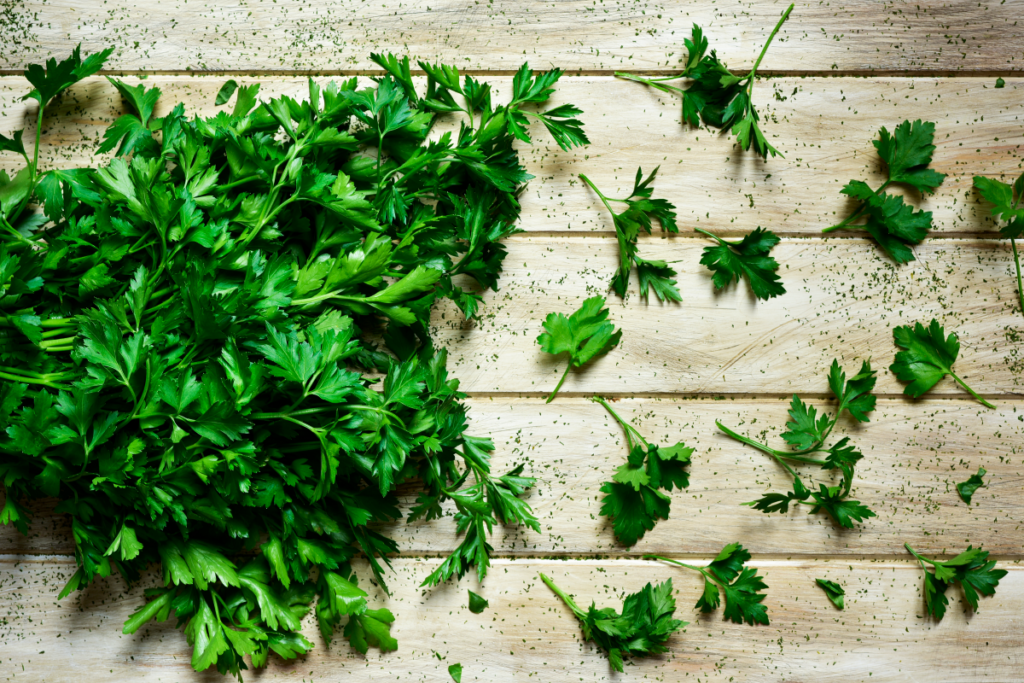
When selecting the right herbs for your garden, there are a few factors to consider. First and foremost, think about the growing requirements of each herb. Some herbs thrive in sunny spots, while others prefer more shade. Consider the sunlight your garden receives throughout the day and choose herbs accordingly.
Another important consideration is your preferences and culinary goals. Think about the flavors you enjoy and the dishes you like to cook. Popular herbs like basil, chives, cilantro, mint, oregano, parsley, rosemary, sage, and thyme are great options. Each herb brings its unique qualities and benefits to the table, so you can mix and match to create a diverse and flavorful garden.
Once you’ve selected your herbs, it’s time to think about their specific needs regarding soil and water. Some herbs prefer well-drained soil, while others can tolerate slightly damp conditions. It’s a good idea to group herbs with similar water and soil requirements for easier maintenance.
Here are some popular herbs and their growing preferences:
- Basil: Requires full sun and well-drained soil.
- Mint: Thrives in partial shade and moist soil.
- Parsley: Prefers sun or partial shade and well-drained soil.
- Thyme: Enjoys full sun and well-drained soil.
Remember, selecting the right herbs for your garden is all about finding the perfect balance between their growing requirements and your own preferences. With a little research and planning, you’ll be well on your way to a thriving herb garden that brings fresh flavors to your table all year round.
Setting Up Your Herb Garden: Location and Layout
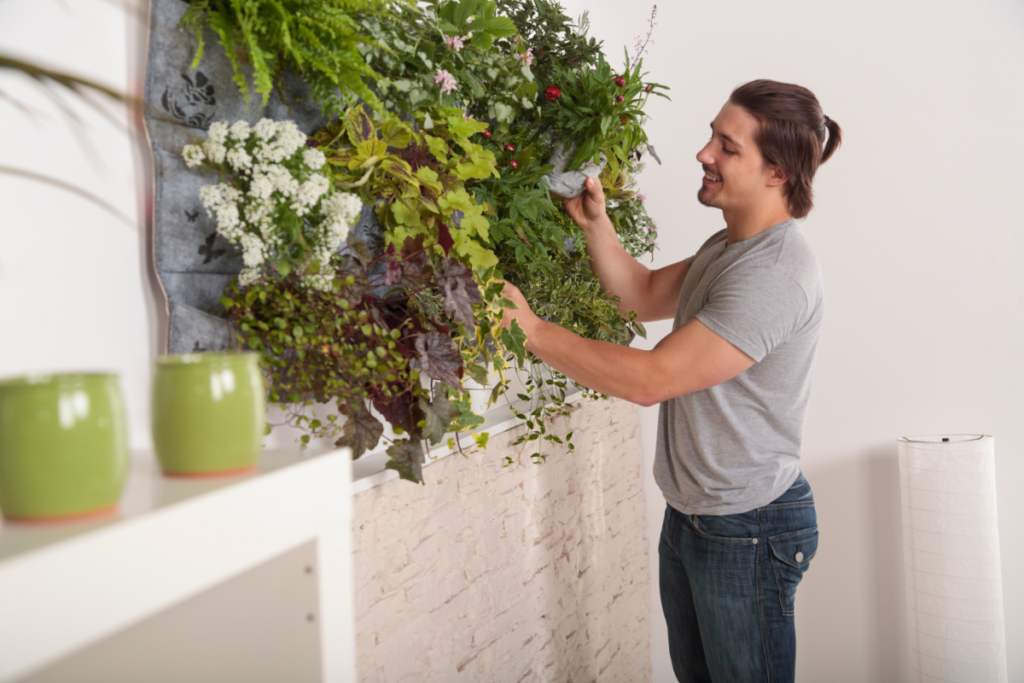
When setting up your herb garden, the right location and layout are crucial for success. Start by considering the amount of sunlight your herbs will need. Most herbs thrive in 6-8 hours of sunlight daily, so choose a sunny spot in your yard or a well-lit area for indoor gardens. This will ensure your herbs receive the necessary light for optimal growth and flavor.
Next, think about the space you have available for your herb garden. Whether working with a small balcony or a spacious yard, it’s important to plan your layout accordingly. Give each herb enough room to grow and spread out, considering their specific growth habits and size. This will prevent overcrowding and allow for proper air circulation, reducing disease risk.
━Considering Companion Planting━
In addition to choosing the right location and layout, consider companion planting in your herb garden. Some herbs have beneficial relationships with each other, helping to deter pests or enhance flavor. For example, planting basil near tomatoes can repel pests that commonly affect tomatoes, while pairing chives with carrots can improve the carrots’ flavor—research companion planting options to maximize the health and productivity of your herbs.
By carefully selecting the location and planning the layout of your herb garden, you’ll create an environment that promotes healthy growth and abundant harvests. Take the time to evaluate the sunlight availability and space, and consider incorporating companion planting techniques for even greater success.
Watering Guidelines for Your Herb Garden
Proper watering is essential for the health and growth of your herbs. Most herbs prefer moist but well-drained soil, so it’s important to find the right balance. Here are some guidelines to help you water your herb garden effectively:
- Check the soil moisture: Before watering, check the top inch of soil using your finger. If it feels dry, it’s time to water your herbs.
- Water deeply: When watering, make sure to water deeply enough to reach the roots of your herbs. It will encourage strong root growth and help your herbs thrive.
- Avoid overwatering: Overwatering can lead to root rot and other plant diseases. It’s better to underwater than overwater your herbs, as most herbs prefer slightly drier conditions.
- Consider the weather: Adjust your watering routine based on the weather conditions. Hot and dry weather may require more frequent watering, while cool and rainy weather may require less.
Each herb has its own specific watering needs, so it’s important to understand the requirements of the herbs in your garden. Take these factors into consideration and adjust your watering schedule accordingly.
━Additional Tips━
- Use the right watering technique: Water your herbs at the base of the plants, avoiding overhead watering. This helps prevent disease and keeps the foliage dry.
- Consider the container size: If you have herbs planted in containers, they may require more frequent watering than herbs planted in the ground.
- Observe your herbs: Pay attention to the overall health and appearance. Yellowing leaves or wilting can be signs of dehydration, while waterlogged leaves or mold can indicate overwatering.
By following these watering guidelines and closely monitoring the needs of your herbs, you’ll be able to maintain a healthy and thriving herb garden. Remember, watering is just one aspect of herb garden care, so continue to learn and adapt your gardening practices as needed.
Care and Maintenance of Your Herb Garden
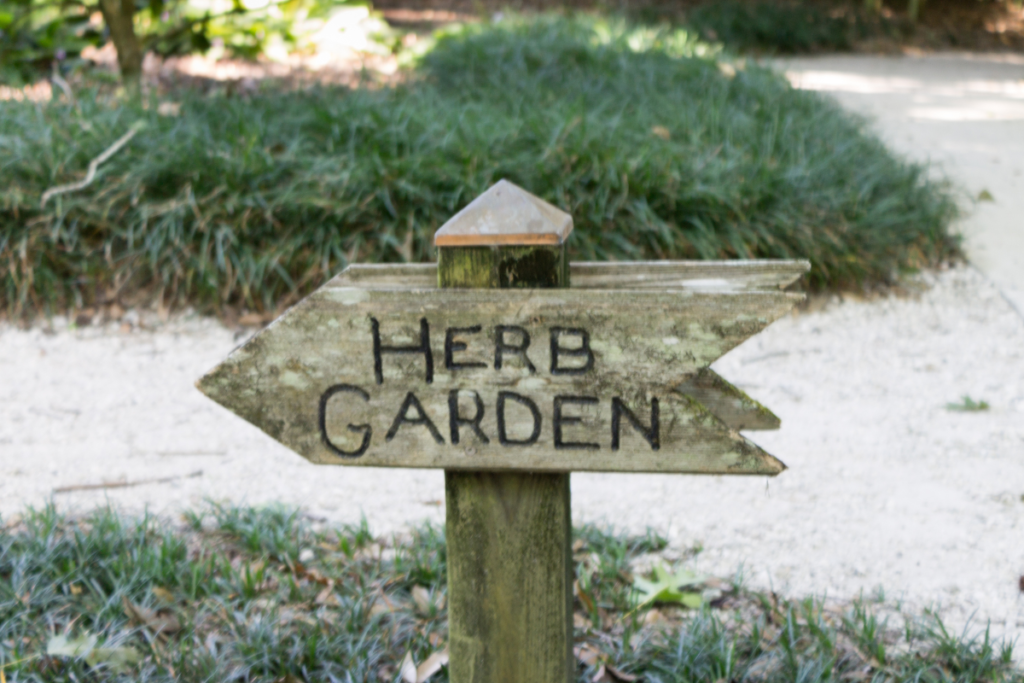
Once you have set up your herb garden, it’s important to provide regular care and maintenance to ensure the continued health and productivity of your herbs. Follow these tips to keep your herb garden thriving:
- Weeding: Regularly remove weeds from your herb garden to prevent them from competing with your herbs for nutrients and water. Regular weeding also helps maintain a tidy appearance.
- Fertilizing: To provide your herbs with essential nutrients, fertilize them regularly. Use a balanced organic fertilizer or compost to promote healthy growth and enhance the flavor of your herbs.
- Pruning or Trimming: Maintain the shape and size of your herbs by pruning or trimming them regularly. It helps stimulate new growth and prevents overcrowding.
- Pest and Disease Control: Keep a close eye on your herb garden and monitor for pests and diseases. If you notice any signs of infestation or disease, take immediate action to prevent further damage. Use organic methods whenever possible to minimize the use of chemicals.
Remember: Each herb has its own specific care requirements, so be sure to research the needs of the herbs you are growing and adjust your care routine accordingly. With proper care and maintenance, your herb garden will continue to provide you with an abundant supply of fresh and flavorful herbs for your culinary adventures.
Harvesting Your Homegrown Herbs
Once your herb garden is flourishing, it’s time to reap the rewards of your hard work by harvesting your homegrown herbs. Harvesting herbs at the right time ensures maximum flavor and potency, allowing you to add freshness to your culinary creations. Here are some essential tips and techniques to help you harvest your herbs like a pro:
✔️Timing is Everything
- Harvest herbs in the morning after the dew has evaporated but before the sun is at its peak. This is when the essential oils in the herbs are at their highest concentration, resulting in the best flavor.
- For leafy herbs like basil, cilantro, and parsley, begin harvesting once the plant has grown to a healthy size and has enough foliage to sustain growth.
- For woody herbs like rosemary and thyme, you can start harvesting as soon as the plant has established itself, typically after a couple of months.
✔️Cutting Techniques
- When harvesting leafy herbs, such as basil and mint, use sharp scissors or garden shears to snip off individual leaves or leafy stems. Avoid cutting down the entire plant, as this can hinder its growth.
- For woody herbs like rosemary and thyme, use a sharp knife or pruners to cut the stem just above a leaf node or branching point. It encourages new growth and maintains the plant’s shape.
- Remember always to leave at least one-third of the plant intact to ensure its continued growth and vitality.
✔️Preservation and Storage
To extend the shelf life of your harvested herbs, consider drying or freezing them for future use.
- Drying: Hang bundles of herbs upside down in a cool, well-ventilated area. Once the herbs are completely dry, remove the leaves from the stems and store them in airtight containers away from light and moisture.
- Freezing: Blanch the herbs in boiling water for a few seconds, then immediately transfer them to ice water to stop cooking. Once cooled, pat them dry, chop or leave them whole, and place them in airtight containers or freezer bags. Label and store them in the freezer for up to 6 months.
By mastering the art of harvesting, you can enjoy the bountiful flavors and aromas of your homegrown herbs all year round. Experiment with different herbs and techniques to discover new culinary delights and elevate your dishes to the next level.
Seasonal Considerations for Herb Gardening
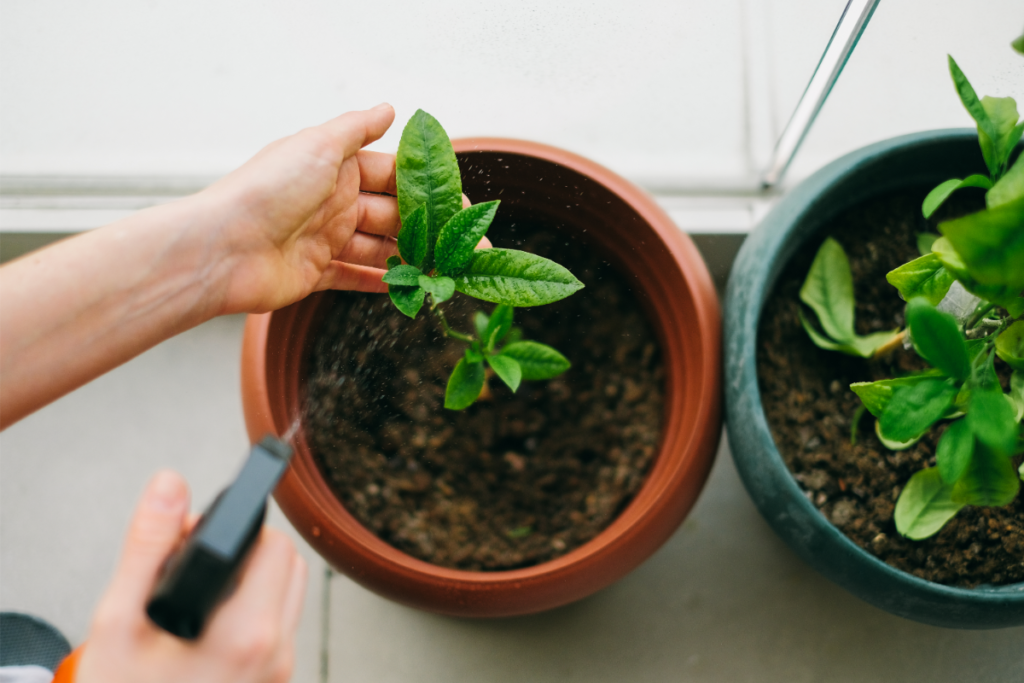
Gardening is a dynamic process influenced by the changing seasons. To successfully maintain your herb garden throughout the year, it’s essential to consider the seasonal requirements of your plants. Here are some key seasonal considerations for herb gardening:
⏺Temperature
Different herbs have different temperature preferences. Some herbs, like basil and cilantro, thrive in warm temperatures, while others, like parsley and mint, prefer cooler conditions. Adjust your planting schedule accordingly and provide the appropriate temperature conditions for each herb.
⏺Sunlight
As the seasons change, so does the amount of sunlight available. Monitor the sunlight patterns in your garden and make adjustments as needed. Herbs that require full sun should be positioned in areas with maximum sunlight exposure, while those that prefer partial shade can be placed in areas with spotty shade.
⏺Watering
Seasonal variations in rainfall can affect the watering needs of your herbs. During hotter months, you may need to increase the watering frequency to prevent dehydration, while in cooler months, you should reduce watering to avoid waterlogged soil. Regularly check the moisture level of the soil and adjust your watering routine accordingly.
By paying attention to these seasonal considerations, you can ensure your herb garden thrives year-round. Remember to stay in touch with your plants, observe their needs, and adjust accordingly. With proper care and attention, you can enjoy a bountiful herb garden no matter the season.
Common Mistakes to Avoid in Herb Garden Watering and Care
When it comes to herb gardening, even the most seasoned gardeners can make mistakes. However, by understanding and avoiding common pitfalls, you can increase your chances of success and enjoy a thriving herb garden. Here are some mistakes to watch out for:
- Overwatering: One of the most common mistakes is giving your herbs too much water. Remember that most herbs prefer moist but well-drained soil. Before watering, check the top inch of soil, and only water if it feels dry.
- Inadequate sunlight: Another mistake is not providing enough sunlight for your herbs. Most herbs require at least 6-8 hours of direct sunlight per day. Choose a sunny spot in your yard or provide sufficient artificial light for indoor gardens.
- Neglecting pests and diseases: It’s essential to monitor your herb garden for pests and diseases regularly. Common pests like aphids, mites, and fungal diseases can quickly damage your plants if left unchecked. Implement preventive measures and take prompt action at the first signs of trouble.
- Using the right soil or containers: Using the right soil or containers can help the growth of your herbs. Use well-draining soil specifically formulated for herbs and choose containers with drainage holes to prevent waterlogging.
- Improper harvesting techniques: Harvesting your herbs at the wrong time or in the wrong way can affect their flavor and future growth. Learn the proper techniques for each herb, such as harvesting leaves before the plant flowers or trimming stems just above a leaf node.
By being aware of these common mistakes and taking the necessary precautions, you’ll be well on your way to a successful herb garden. Remember to research the specific needs of each herb, observe their growth patterns closely, and make adjustments as needed. With patience and care, you can cultivate a flourishing herb garden that will provide fresh flavors and aromatic delights for years.
Frequently Asked Questions
Can I use a sprinkler system for herb garden watering?
Yes, you can use a sprinkler system for watering your herb garden. It can help evenly distribute water, but be mindful not to overwater.
What signs indicate that my herbs are overwatered?
If your herbs have leaves turning yellow, brown, or feel squishy, these are signs that they might be overwatered. Also, if the soil is constantly soggy, that’s a clue.
Can I use rainwater for herb garden watering?
Using rainwater for your herb garden is a great idea! It’s natural and free. Just make sure to collect and store it properly.
Are there any herbs that are drought-resistant and require less water?
Yes, some herbs like rosemary, thyme, and sage are drought-resistant. They need less water, making them a good choice for low-maintenance gardens.
What’s the best way to water herbs when I’m on vacation?
When you’re on vacation, use self-watering pots or ask a friend to water your herbs. You can also place them in a shady spot to reduce water loss.
How do I revive herbs that have wilted due to underwatering?
To revive wilted herbs from underwatering, give them a good soak and trim any dead leaves or stems. They should perk up after a while.
Final Words
Mastering herb garden watering and care is a rewarding journey that allows you to enjoy the flavors and aromas of fresh herbs right in your own backyard. Following the comprehensive guide, you’ve gained valuable knowledge on selecting the right herbs, setting up your garden, and understanding the importance of proper watering and care.
Nurturing your herbs with enough water, sunlight, and attention will ensure their health and productivity. Remember to adjust your watering routine based on factors such as temperature and humidity, and be mindful of each herb’s specific requirements.
So, embrace the joy of growing your herbs and let nature’s bounty enhance your culinary creations. With this comprehensive guide as your companion, you can create a flourishing herb garden that will bring you joy and flavorful delights for years to come.

